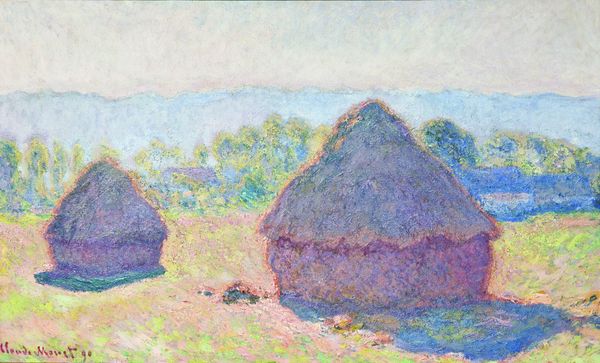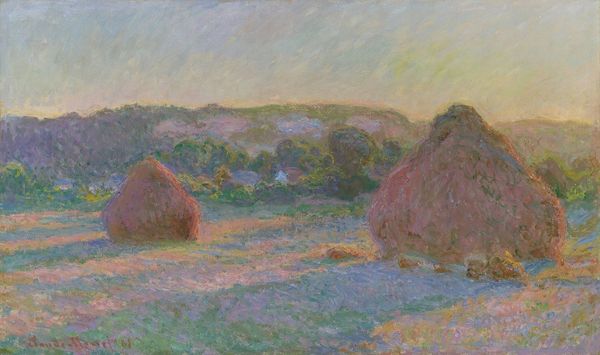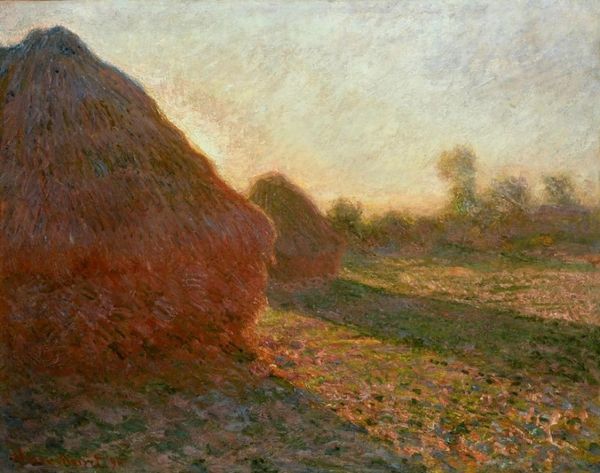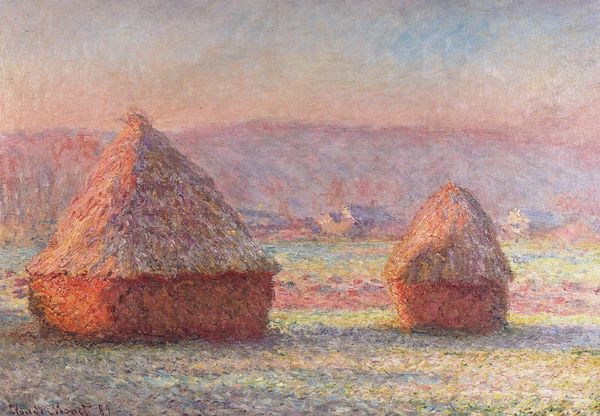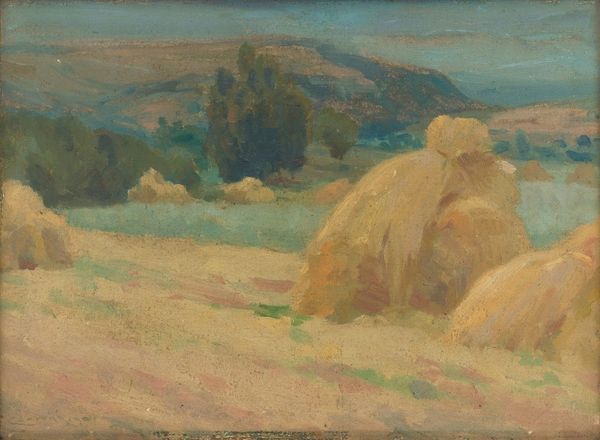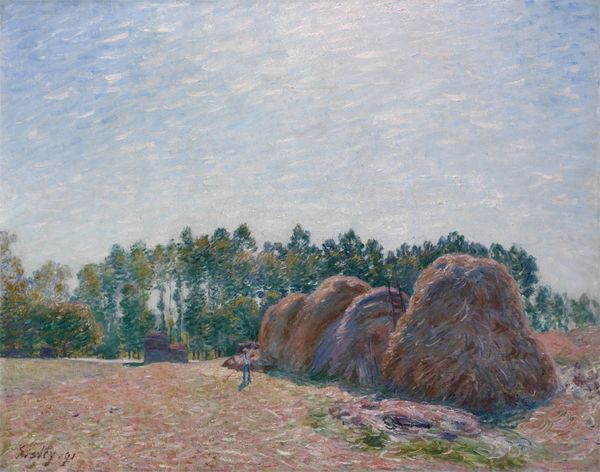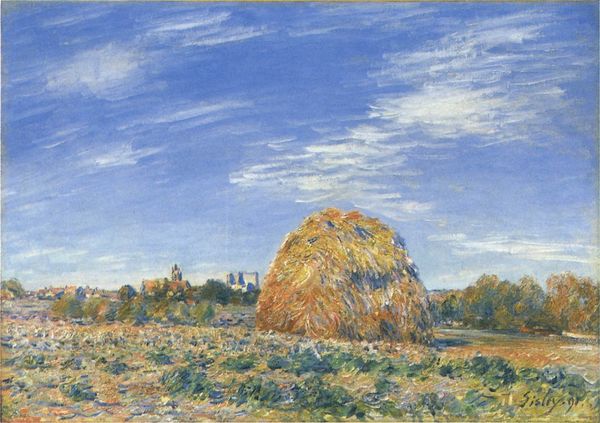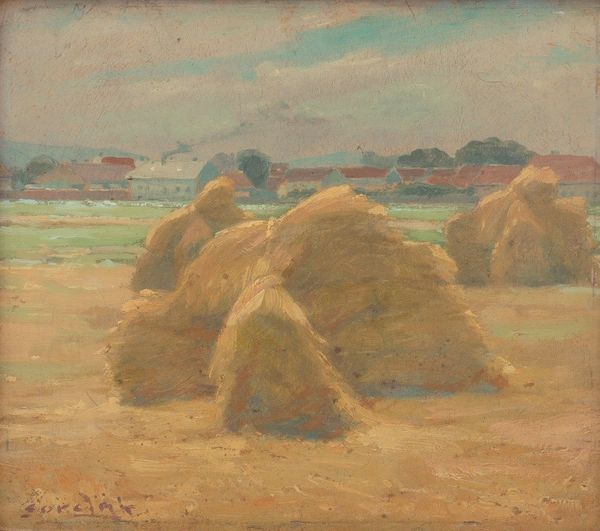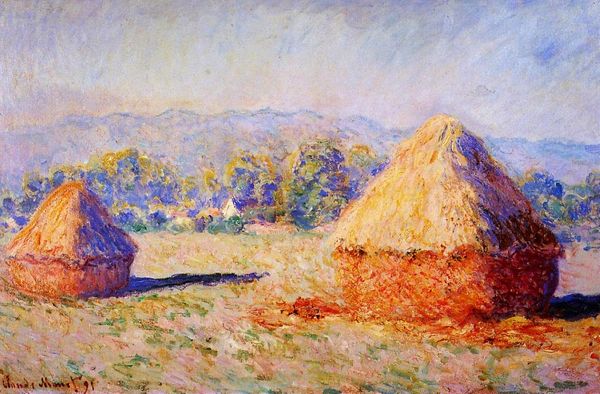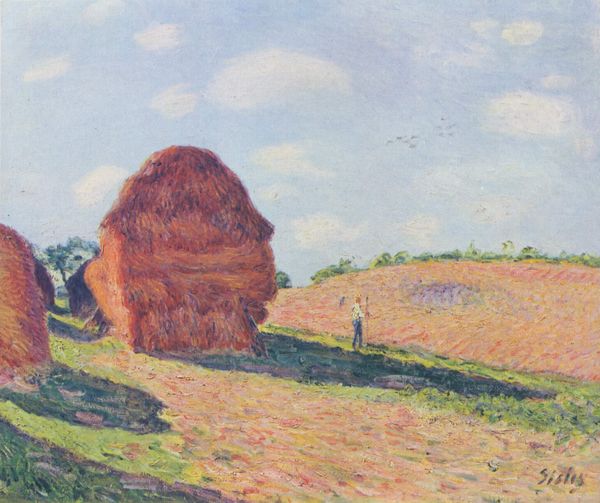
Copyright: Public Domain: Artvee
Curator: Standing before us is Claude Monet's "Haystacks, end of Summer," painted in 1891. An oil painting which forms part of Monet’s Haystacks series, showcasing the same subjects under varying conditions of light and atmosphere. Editor: It's undeniably beautiful. The gentle blues and golds create such a peaceful, almost hazy atmosphere. I find myself immediately drawn to the texture implied in the haystacks themselves – they seem almost to vibrate with light. Curator: The "vibration" comes from Monet’s masterful use of plein-air technique, moving out of the studio to document these forms en plain air. Let's not overlook that this reflects agricultural labor, it connects the rhythms of rural life to art production in its choice of subject, doesn't it? These fields would be the economic foundations of rural communities. Editor: True, but the form is also remarkable. Look how the composition leads the eye—from the larger, closer haystack to the smaller one in the distance, and then to the suggestion of the village beyond. There's a wonderful depth of field, a play of receding planes and muted tonalities which lends it a quiet grandeur. The texture makes one want to look even deeper within. Curator: Consider the context. The late 19th century witnessed rapid industrialization and urbanization. Paintings like these, although seemingly bucolic, reflect a nostalgia, maybe even an idealized view of agricultural life in contrast to increasing mechanization. It may remind us of the transition of a rural labor, through an artistic perspective. Editor: I can’t deny the historical setting. However, I also think there's something very elemental here—almost abstract in its simplicity. Those pyramidal shapes of the haystacks contrast softly with the amorphous, indefinite background. There is structure which feels both solid and evanescent simultaneously. Curator: I am just curious to what extend was he concerned with these transitions in the social construct and material conditions. Perhaps the material wealth generated in this industry made these kind of artworks attainable, to even reflect on them from afar? The means of artistic production are inevitably interwoven with economic realities, what do you think? Editor: Perhaps so. It could very well be the point from which this scene gains that nostalgic essence that permeates this piece. But isn't it wonderful how an artwork can evoke such different responses? The interplay of formal elements creates a contemplative experience regardless of the specific historical context we place it in. Curator: Absolutely. Ultimately, it reflects not only the artist's observation but our own understanding of the artwork's creation within the landscape of its time. Editor: Indeed, whether drawn to the social narrative or the formal elegance, it is undeniable the artwork encourages thoughtful contemplation.
Comments
No comments
Be the first to comment and join the conversation on the ultimate creative platform.


